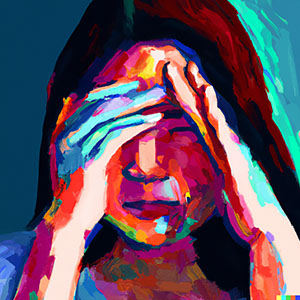Emotional-color synesthesia: A Deep Dive into the Intersection of Emotions and Colors
Emotional-color synesthesia, also known as emotional synesthesia or affective synesthesia, is a fascinating phenomenon where people associate certain emotions with specific colors. When experiencing an emotion, people with emotional-color synesthesia may see a corresponding color or feel a certain hue. It’s a unique way to experience the world and can have a profound impact on how individuals perceive their emotions.

What is Emotional-color Synesthesia?
Emotional-color synesthesia is a type of synesthesia where emotions are experienced as colors or color associations. It’s a relatively rare form of synesthesia, with only 1-2% of the population experiencing it.
People with emotional-color synesthesia may see colors when they experience emotions, or they may associate specific colors with certain emotions. For example, they may see the color red when they feel anger, or they may feel a blue hue when they’re sad.
The experience of emotional-color synesthesia can vary from person to person. Some may see the colors in their mind’s eye, while others may experience the colors as a physical sensation. For some, the colors may be vivid and intense, while for others, they may be more subdued.
The Science behind Emotional-color Synesthesia
The exact mechanisms behind emotional-color synesthesia are still unclear. However, some researchers believe that it’s linked to cross-activation between the emotional and color processing regions of the brain.
In emotional-color synesthesia, emotions and colors are thought to be processed in the same areas of the brain. This means that when an emotion is experienced, it activates the same areas that process colors, leading to the experience of seeing or feeling a specific color.
Studies have shown that people with emotional-color synesthesia have increased connectivity between the brain regions responsible for emotion processing and color perception. This increased connectivity may explain why they experience a color association with their emotions.
Benefits of Emotional-color Synesthesia
Although emotional-color synesthesia is a relatively rare condition, it can have some benefits. For example, people with this type of synesthesia may be better at recognizing emotions in others. This is because they have a heightened awareness of the connection between emotions and colors.
Emotional-color synesthesia can also be used as a tool for creative expression. Artists with this type of synesthesia may use their emotional-color associations to create unique and vibrant pieces of art.
Drawbacks of Emotional-color Synesthesia
While emotional-color synesthesia can be a unique and interesting experience, it can also have some drawbacks. For example, experiencing intense emotions may trigger overwhelming color associations, which can be distracting and disruptive.
In addition, people with emotional-color synesthesia may find it difficult to communicate their emotional experiences to others. Since their experience of emotions is so closely tied to their experience of colors, it can be hard for them to convey their emotions to people who don’t have synesthesia.
Final thoughts, Emotional-color synesthesia is a fascinating phenomenon that highlights the complex ways in which our brains perceive and process the world around us. Although it’s relatively rare, it can have some interesting benefits and drawbacks.
As with all types of synesthesia, it’s important to remember that the experience of emotional-color synesthesia is unique to each individual. While some may see intense and vivid colors, others may experience more subdued color associations.